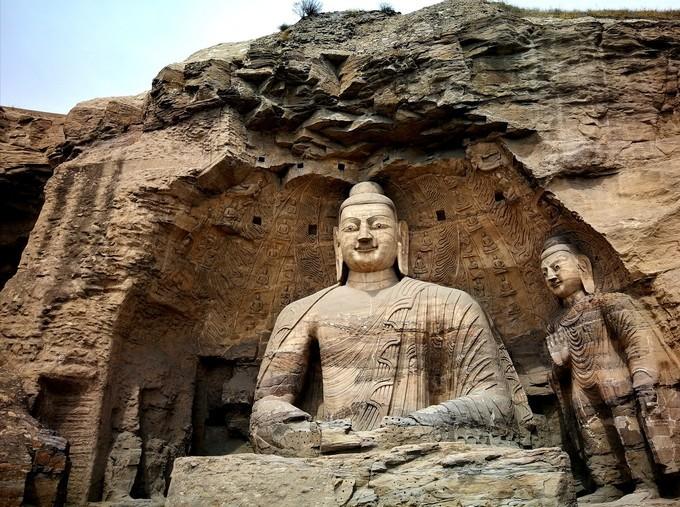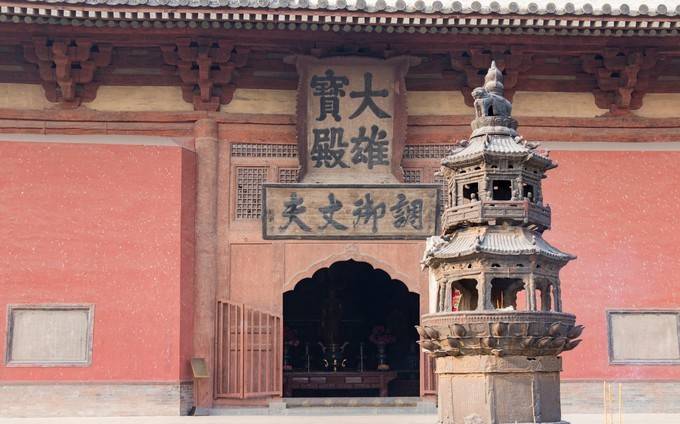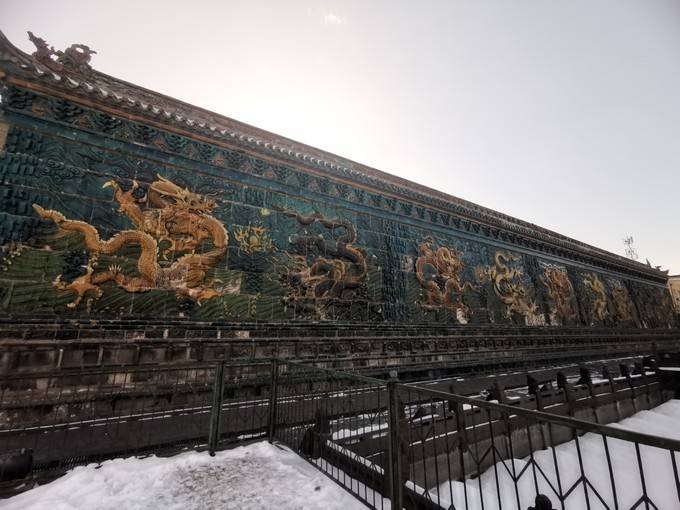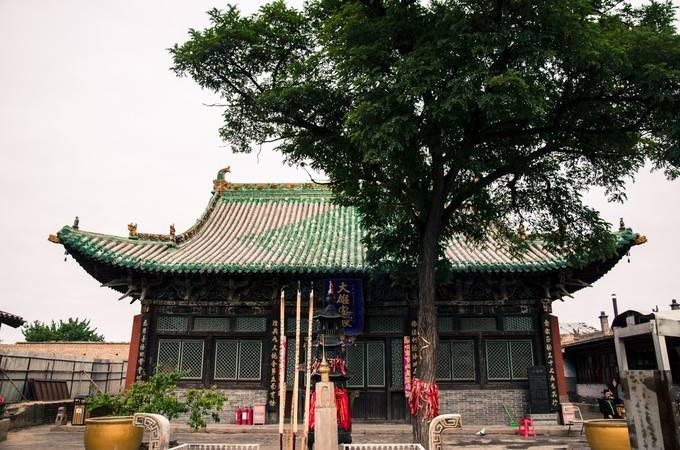The fame of the Yungang Grottoes may surpass that of Datong. It is a UNESCO World Cultural Heritage site and the first large-scale grotto complex in China to be commissioned by the royal family after the introduction of Buddhist art to China. The carving spanned an entire dynasty and features a hybrid artistic style that integrates Greek, ancient Indian, and Central Plains cultures.
Huayan Temple
Huayan Temple was first built during the Liao Dynasty. The temple is named after the Mahayana Buddhist scripture 'Avatamsaka Sutra'. Huayan Temple faces west to east, which is said to be due to the Khitan people's custom of worshipping the sun and considering the west as the most honorable direction.
Datong first had the Northern Temple, then the Southern Temple, and later the Huayan Temple. Unfortunately, the Northern Temple (Tongguang Temple), built during the reign of Emperor Ming of Han, was destroyed during the 'Cultural Revolution'. The second-ranked 'Southern Temple' is Shanhua Temple. The Mahavira Hall in the temple is a Liao dynasty structure, while the Hall of Heavenly Kings, the Hall of Three Saints, and the Pavilion of Universal Worthy are all Jin dynasty buildings.
Datong Nine-Dragon Wall
Datong currently has nine dragon walls, with the Nine-Dragon Wall being the most famous one. In 1391, Zhu Yuanzhang's son Zhu Gui was enfeoffed as the Prince of Dai, and in 1392, he moved to Datong to establish the Prince of Dai's mansion. The mansion's strict regulations and luxurious scale often lead people to compare it with the Forbidden City, earning it the nickname 'Little Forbidden City'.
Fogong Temple Shakyamuni Pagoda
The wooden pagoda was initially built in the second year of the Liao Dynasty's Qingning period (1056 AD). It underwent significant renovations from the second to the sixth year of the Jin Dynasty's Mingchang period (1191-1195 AD). Subsequent dynasties also carried out repairs. Over the past 900 years, the wooden pagoda has withstood seven major earthquakes. During the chaotic warlord era in Shanxi, the pagoda was hit by over 200 shells but still stands tall today, making it the oldest surviving wooden pagoda in China.
Jingtu Temple
Don't miss Jingtu Temple, which is not far from the Yingxian Wooden Pagoda. The courtyard is a mix of old and new, and each main hall has its own unique features. However, when you look up, you will be greeted with a stunning sight. The hidden seaweed and heavenly pavilions in this small temple will definitely amaze you, especially those who are not interested in the wood carving art of Huayan Temple.
The Hanging Temple was built in the 15th year of the Taihe era of the Northern Wei Dynasty (491 AD). The main existing buildings were reconstructed during the Ming and Qing Dynasties. Originally named 'Xuankong Pavilion', 'Xuan' originates from Taoism and 'Kong' from Buddhism. Later, it was extended to mean 'Hanging in the Air', which now seems more figurative: the entire temple has 41 rooms, covering only 152.5 square meters, yet it looks like a temple on flat ground when you climb to the top of the mountain.
Mount Wutai
Mount Wutai is a world-renowned tourist destination, comparable to Lhasa and Varanasi. It was first established during the Northern Wei Dynasty, reached new heights during the Tang Dynasty, and experienced a revival during the Ming and Qing Dynasties. As the foremost of the Four Sacred Mountains, Mount Wutai has almost become a testament to the history of Chinese Buddhism. From the perspectives of architecture, sculpture, murals, and religion, Mount Wutai is an insurmountable peak.
Xiantong Temple
The temple has many halos: it was built the earliest (according to legend, it was during the Yongping period of Emperor Ming of the Eastern Han Dynasty, known as the 'Second Ancient Temple of China', but more likely during the Northern Wei), it is the largest in scale, has produced many eminent monks (known as the 'Ancestral Court of the Huayan School'), and has the most scenic spots. It is not an exaggeration to call it the first ancestral court of Mount Wutai.
Tayuan Temple
Wutai Mountain symbolizes the White Pagoda, which is the Shakyamuni Relic Pagoda rebuilt during the Ming Dynasty. As you walk around the pagoda in three circles with the crowd, you can admire the dense inscriptions in Han, Mongolian, and Manchu, demonstrating the ancients' emphasis on this pagoda. Behind the pagoda tower, there is a rotating prayer wheel in the Tripitaka Pavilion, but it no longer rotates to protect the cultural relics. Upon closer inspection of the ground, one can still find the hidden door that allows access for the movement of the rotating prayer wheel.
Pusa Ding
On the Lingjiu Peak in the central region stands a towering Tibetan Buddhist monastery, a treasure of the Qing Dynasty royal family. The yellow glazed tiles symbolize the nobility of the royal family. Both Emperor Kangxi and Emperor Qianlong set up palaces here. Notable figures such as the 13th Dalai Lama and the 9th Panchen Lama also stayed here. Today, a hymn written by the 11th Panchen Lama is on display in the hall.

























